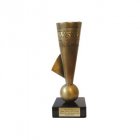This is the prize awarded by a well-known branch monthly magazine “Rynek Chemiczny” under the auspices of the Ministry of Economy, Labour and Social Policy, Polish Chamber of Chemical Industry and Association of Engineers and Technicians of Chemical Industry.
We were awarded the prize in this contest. The contest committee appreciated the advantages of one of our latest products – surfacer enriched with carbon fibres – MASTER BLACK
Read more: www.rynekchemiczny.com

We are proud to share information about Troton’s victory The European Business Awards. The European Business Awards is one of […]

The ”Fair Play Enterprise” Programme is affiliated by the Polish Chamber of Commerce and it is organized by Institute for […]

The prize was awarded by Newsweek and the Kronenberg Foundation, carrying out together a project called Responsible Business. The partners […]

„Polski Sukces – Polish Contest for Promoting Polish Companies of Economic Success The Association of Polish Forum for Business Promotion […]
It is not recommended to apply 2K paints over 1K paints. 1K and 2K inks differ in their composition and properties, including hardness, chemical resistance and durability. 1K paints are one-component and dry by evaporating the solvent, while 2K paints are two-component and need to be cured by adding a hardener. Applying 2K paint over 1K paint can cause unpredictable chemical reactions and lead to undesirable effects such as dulling, chipping or flaking of the paint. Therefore, always use paints according to the manufacturer’s instructions and do not mix different types of paints. farby zgodnie z instrukcjami producenta i nie mieszać różnych rodzajów farb.
Sea-Line HARD and Sea-Line self-polishing antifouling are not intended for aluminum surfaces. They include copper oxide, which in contact with aluminum causes galvanic corrosion. Especially on aluminum, we offer ALU-PLUS self-polishing anti-fouling paint, which, in addition to excellent adhesion to aluminum, is also 30% more effective than traditional anti-fouling paints.

Refilling and to tackle inequalities caused by damage to or during the course of production

Protects boat surfaces from the effects of destructive activities osmosis and corrosion

Provide an aesthetic and a perfect look of the boat also protective against water and UV radiation

Protect the hull from fouling with algae and shells

Effectively remove scratches, refresh the color of gelcoat or paint, fast shine effect

Special preparations for effective cleaning and refinishing

Laminating, gluing and filling in cracks in gelcoat

Range of products useful in the boat builder work